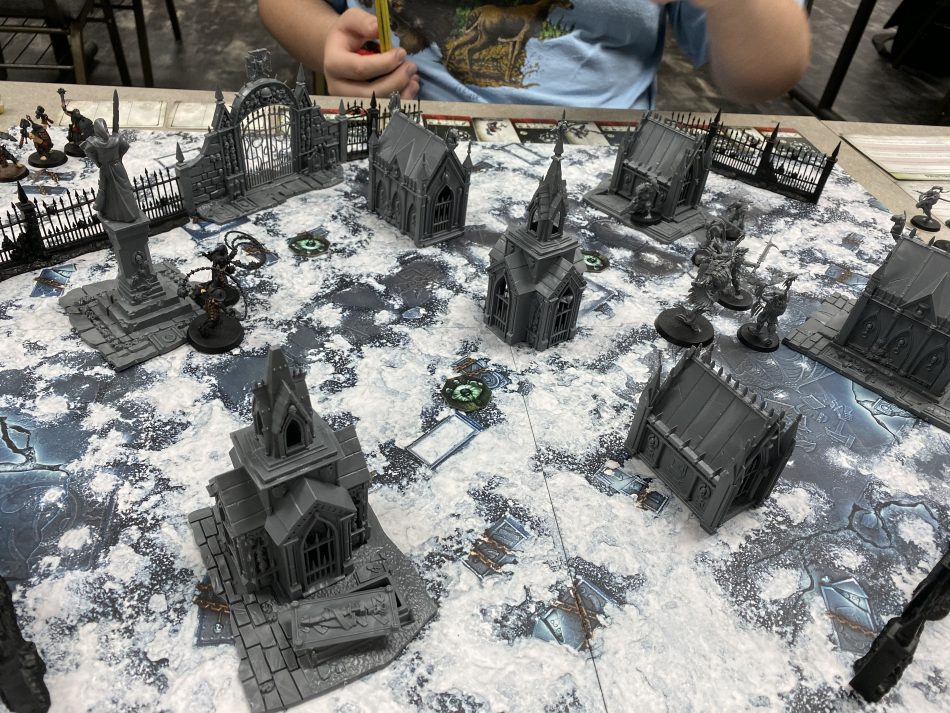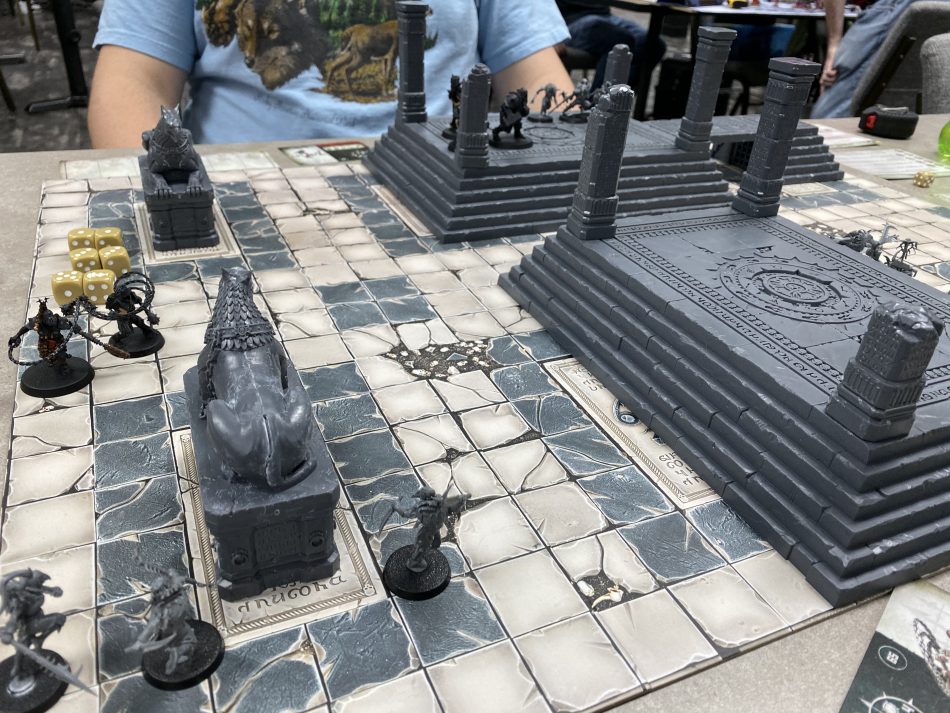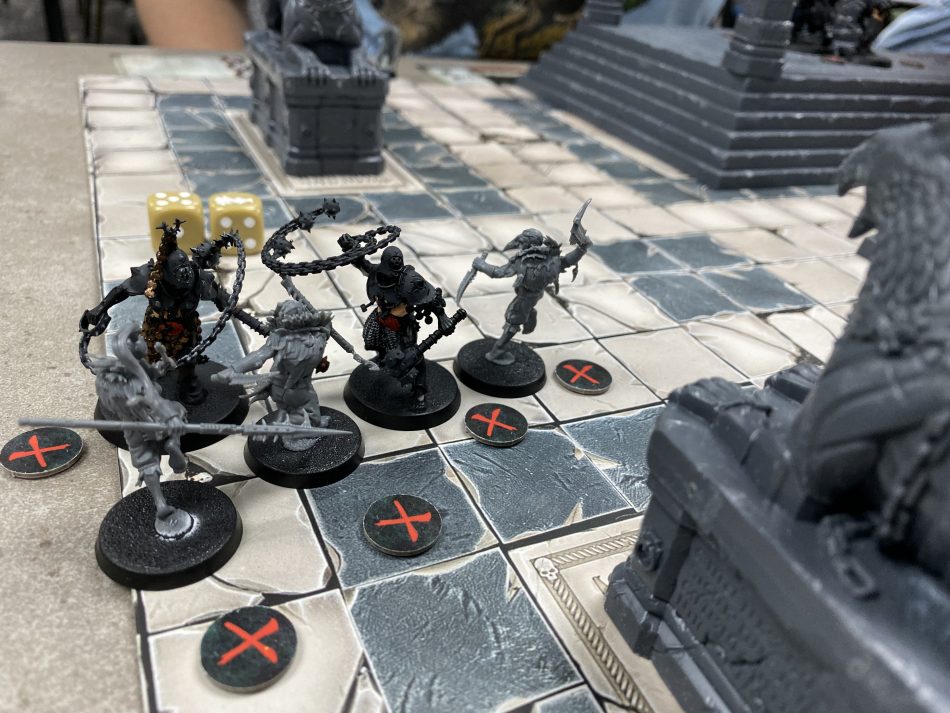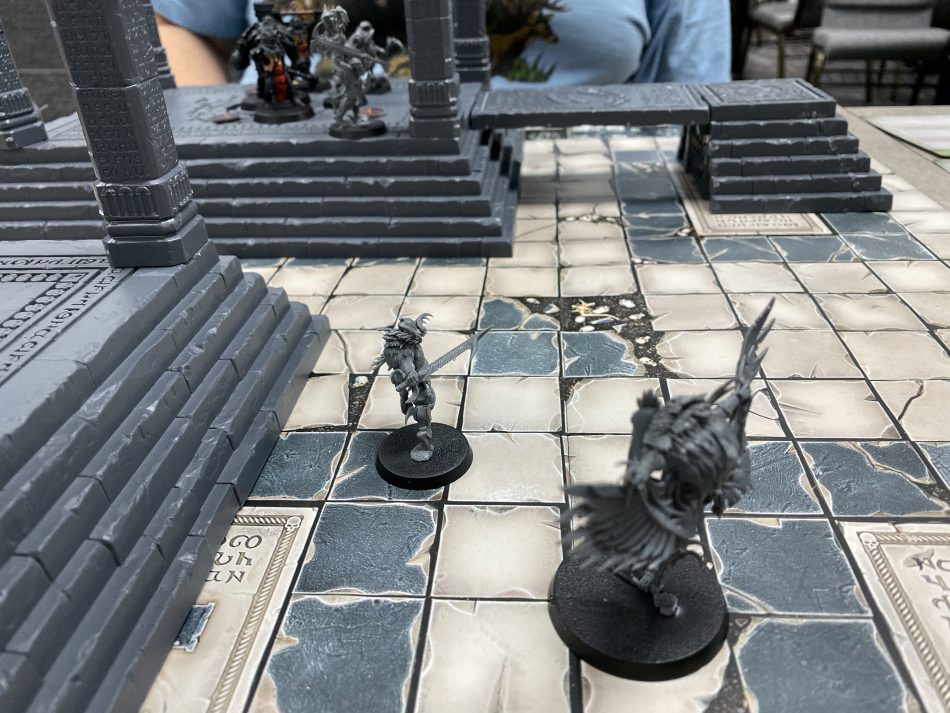Warcry in action, an afteraction
By Tom Gall
Warcry is a skirmish level game by Games Workshop within the Age of Sigmar fantasy universe.
I’ve written about it before when it came out. It features a war band design where you have point costed figures that you build a small force to approx 1000 points and then set to battle.
The system includes terrain kits like the one pictured below which offer a great setting for the action. Need to be painted but they sure are pretty. Terrain kits run about $90.

This article is kind of an after action report and part game explanation. It short because Warcry games are typically about an hour or less long!
When you start a game of warcry, you pull together your force, as mentioned 1000 points. For my Iron Golems, that’s all of about 7-8 figures.
Next, you split your warband into 3 squads, called hammer, dagger and shield. Then you pull a card from 4 different decks. One is the mission, one is the twist which modifies the mission, a card that indicates how the terrain is to be arranged (there is a terrain deck in each of the terrain kits) and last, a deployment card that indicates where and how things are set up as well as where and when reinforcements will arrive.

In this game, victory points are given for “owning” a quarter of the battlefield. The twist means that all warriors will lose a point of strength which also means that everyone in the game is going to be harder to hit. For the deployment, the Red Player will be starting with two parts of their force in the corner and the blue player gets the middle with the rest of their force entering on round 2. You’ll notice that in this game scenario it’s over in 3 rounds. Warcry plays really quick. Most games are 3-5 turns.
The decks are all quite “deep” which means across 4 cards that must be drawn, the number of combinations you’ll play over the lifetime of the game is pretty huge for casual play. For tournaments, they narrow things down a bit, but that’ll be another article as our friendly local game store just received an organized play kit.

Here we are in round 2. Ian’s Corvus Cabal entering with two figures of mine ready to receive them. Over yonder on the platform, a big ole scrum is erupting as both of our leaders and tougher characters are duking it out.
To determine who actives first in warcry is done by rolling 6d6. Dice that don’t match other dice count towards you going first. Dice that match other dice are spent later to give your warriors a special ability as they are activated. Further each turn you receive a “wild” die that you can set on any face. You can also bank the die for a later turn. Add to an ability or maybe add another single to increase your chance of going first.

Activation is a you go, I go system. Each figure gets two actions. So move attack, attack attack, are common themes you’ll see in the game.
The activation system presents a tactical quandary. If you rush in and not be able to attack, you’ll, in turn, suffer two attacks and thus have a harder time winning. In a game like this, you also have to balance against the victory conditions, which are pushing you to own locations. Killing the other guy is good, but in this one, you have to pick your battle.
Ian has 3 figures in this quadrant of the table compared to my two. Unless I take him down, he’s getting victory points on this part of the map.
As mentioned prior during the course of a turn you’ll have some number of dice to spend to gain abilities. This really reminds me of the Saga battle board. The extra abilities can be generic and thus open to any character, or specific to a character. Like to use that really great attack boost, but that warrior isn’t in the action yet, too bad.
The fight here would go my way. Between some great attack rolls and better warriors with stronger hit points, they would be able to take down 2 of the 3 allowing me to take this quadrant.

To attack, you compare your strength rating versions of their defense (shield) rating. If strength is great, you’ll need a 3+, equal 4+, less, 5+ to score a hit. If you roll a 6, you score a critical which just means the weapon does more damage.
While there is a battle over on the far platform, Ian has this closer quadrant under his control and will get the victory points unless I push in.
Fate was with Ian on the far platform fight. He had a great initiative die roll, keeping his wild die to use and with a triple turn it into a quad that then gives him access to a great ability. His best warrior swooped in on mine and did enough damage to take him down. That part of the table started to crumble and another quadrant would be his.
I really enjoy Warcry. The cards for mission and deployment are well thought out and play well. It doesn’t require tons of figures to play which helps to keep the cost of entry under control. The forces are well thought out with flavor in their design and abilities. The models are excellent.
It’s not historical gaming true, but leaving the confines of WWII isn’t always a bad thing and can be great fun.
